When people imagine dry and cold Tibetan plateau, the last thing they think of are rivers. And in fact, huge part of Tibet is separate from river basins. On the Changtang terracotta plains only salty and bitter lakes are scattered here and there. But in the rest of Tibet there are a lot of rivers, world famous rivers! At their origin their water is transparent and cold, and downstream in Tibet it’s muddy and swift, falling in huge waterfalls onto the plains.
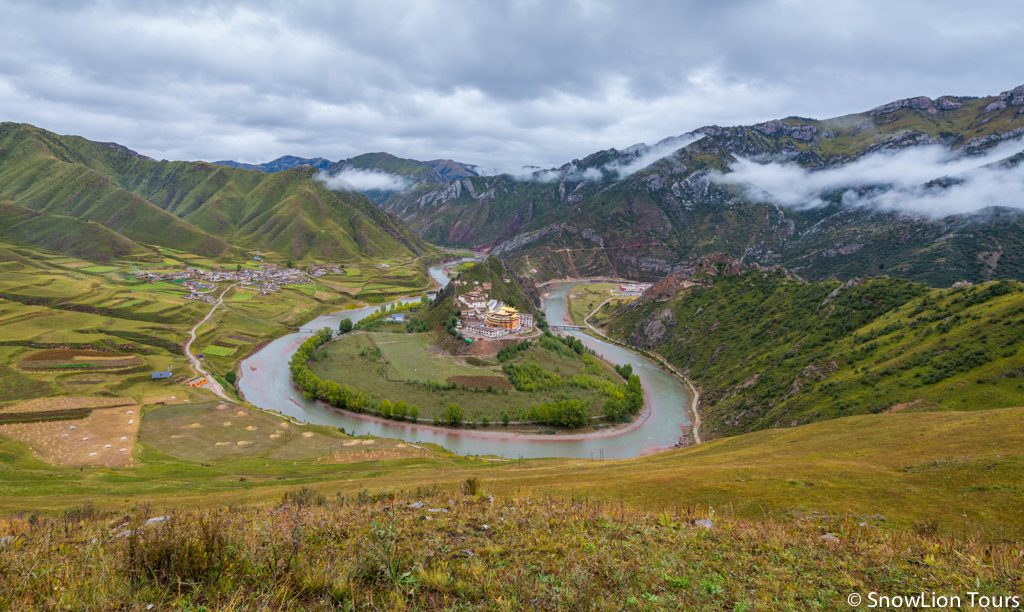
Yangtse River run around Gar Monastery in Kham Tibet
Chinese civilization since ancient times and until the present day has been subsisting on Tibetan rivers. If they were not there, Great Chinese Plains would be a desert just like Taklamakan and Gobi. Nowadays, in the 21st century Chinese experts are closely watching the upper reaches of the rivers: soil degradation, almost imperceptible at four to five thousand meters in the pastures of Tibet, can cause crop failure on the plain, and it is impossible to feed a billion people without this huge amount of water.
Great rivers of Asia: Yellow River, Yangtze River, Mekong River, Salween River, Irrawaddy River, Brahmaputra River, Ganges River and Indus River all begin in Tibet.
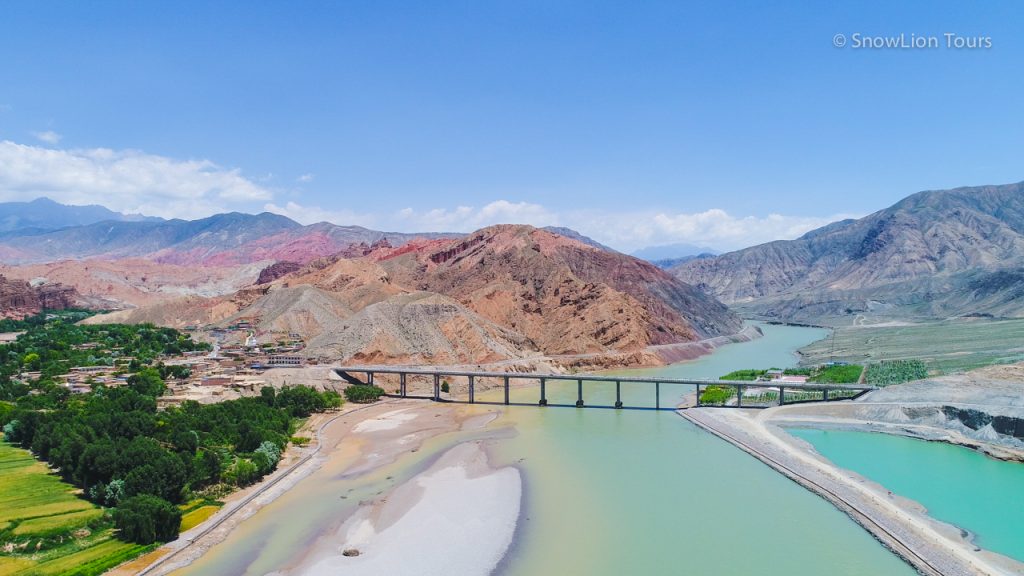
The Most green part of Yellow River in Qinghai Province
The Yellow River – the source of Chinese civilization
Yellow River, also known as Machu river in Tibetan, actually has multiple colours in northeastern Tibet, like artist’s palette, it combines terracotta and beige tributaries. Sediment settles at the bottom of lakes and during overflows, the river flows clear again. It shows all kinds of shades – green, aquamarine, blue, gray-blue, the colours of Tibetan sky, fresh and dry grass.
In the elevated but mildly sloped Tibetan highland the river flows like on a plain. As if it wants to slowly savour the beauty of the sacred snow Mount Amnye Machen, the emerald pastures of Qinghai, and bird singing in the meadows untouched by human presence. It divides into many branches, which flow around the depositions of sand. In such places, the river width may reach as much as a kilometer, while being so shallow that yaks can ford it. Then the river becomes narrow again, deep and flowing fast: the flow can easily carry away not only a human, but even a loaded truck.
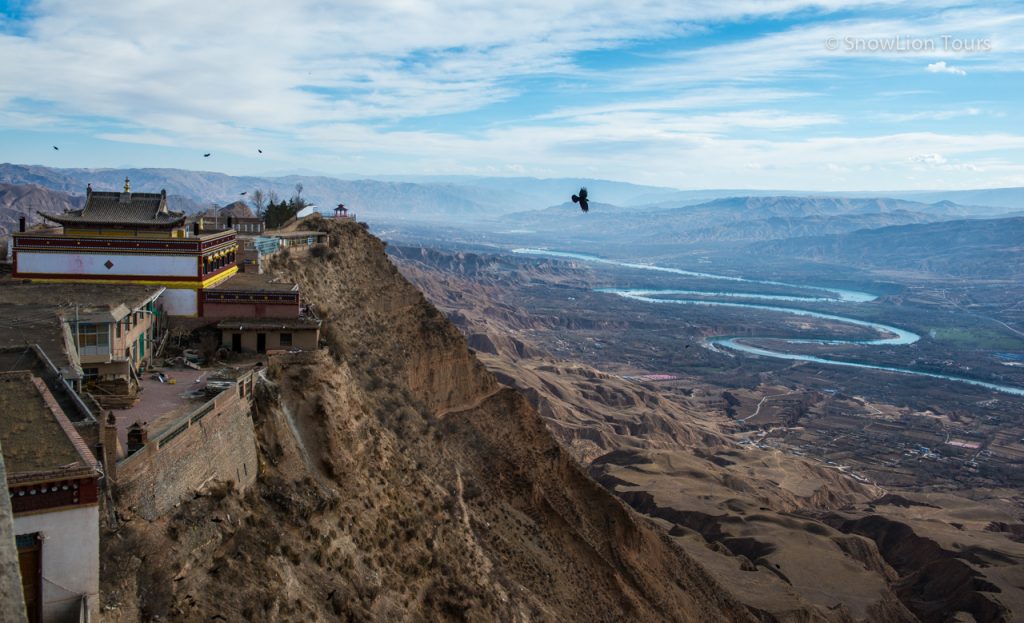
The view of Yellow River bends from Shachung Monastery in Qinghai Province, Eastern Tibet
Before there were no bridges over it, and the Tibetans crossed and transported goods using handcrafted flat-bottomed boats made of yak skins stretched pulled over a frame. Nowadays there are bridges even on small roads, and people cross the river using them, by truck. Bridges are few and it takes time to reach them, but it is still more convenient than crossing on boats like it used to be. Between the bridges and away from the roads lie the protected areas. Kiangs, antelopes, Tibetan foxes and wolves are not afraid of man. And large birds grew really abundant: rangers established safe nests for them in the steppe, places on top of poles.
The river starts to live up to its name and becomes truly yellow and brings legendary fertility only outside Tibet, on the plain, where it washes out yellow Aeolian sediment of the Loess plateau.
Yangtze River – a river of many names
The longest river in Eurasia, so long that each of its four parts has a different name. In Tibet it is known as Drichu river. Several of its origins are located in the very middle of the Tibetan plateau. In the upper reaches it is known under its Mongolian name Ulan-mörön (‘Red River’), and the Chinese call it Totoche. To the North of it there is the origin of the Yellow River, and to the South there is the origin of the Mekong and the Salween. Its Northern sister will soon go as far as thousands of miles, and the Yangtze (under the name Jinshajiang) flows along with its southern sisters. In Eastern Tibet these rivers come down together leaping down to the plain in cascades through impassable gorges.

View of Kyegundo city and Batang river, a tributary of Yangtze in Kham, Eastern Tibet
After leaving the Sino-Tibetan mountains, these three rivers run even closer together, and here the Yangtze is called Sanxia. There are places where all three rivers are within 40 kilometers with snow ridges and six thousand peaks between them, such as the sacred mountain Khawa Karpo. But here in Yunnan the Yangtze moves away to the East and under this name flows slowly across the plain in the direction of Shanghai.
For a long time Chinese have been worried that in the North there is too little water, and the abundant Yangtze waters in the South flows into the sea and are wasted. And they thought it would be good to reflow some of its water to the North. Unlike the Soviet project about the turn of the Siberian rivers, the Chinese approached this problem carefully and came up with three ways to do it. Two of them are already working. Water from the Yangtze flows North through the giant channels. At the elevated points all of the water is pumped by huge pumping stations. And for the third method, which will increase the amount of water flow to the North even more, it is required to dig out tunnels under the most powerful mountain ranges in Eastern Tibet. This has not been done yet, but it is planned.
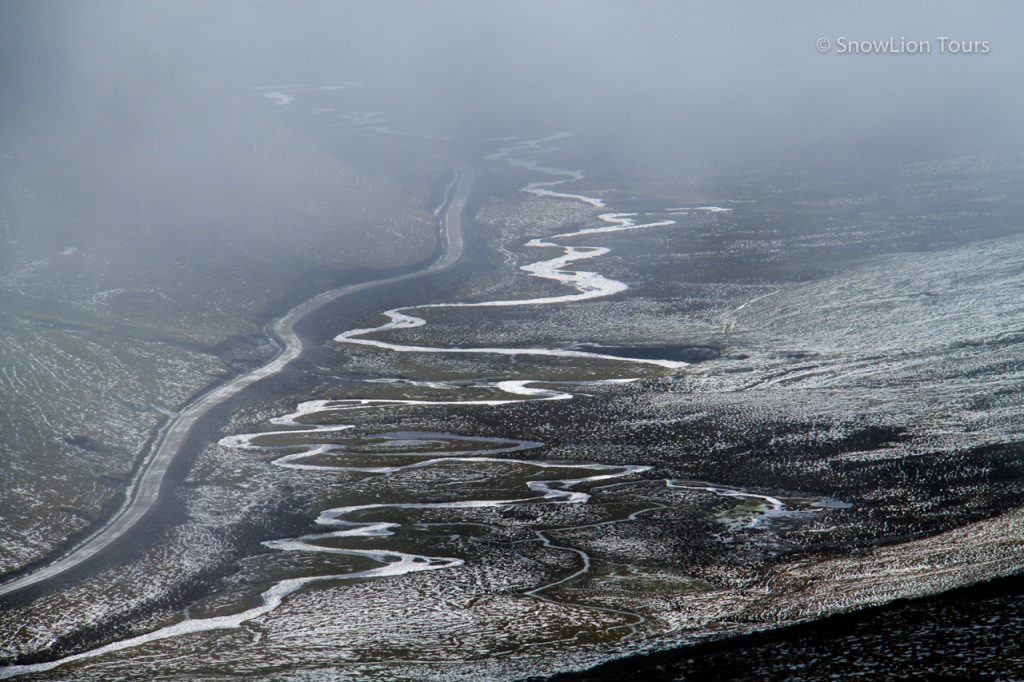
Tributary of the Yangtze river in Nangcheng, Kham, Eastern Tibet
The Brahmaputra (Yarlung Tsangpo) — protector of Tibetan culture
Until not long ago the Brahmaputra remained a geographic mystery. Up to 19th century it was not known that Brahmaputra and Yarlung Tsangpo were the same river: it flows in opposite directions in Tibet and on the plain, and the turning point is very difficult to reach. People could see the place with their own eyes, and not on the photo shoot from the above, only in 1998.
Yarlung Tsangpo, it seems, decided to go a thousand kilometers along the Northern foot of the Himalayas and visit all the important sacred places in Southern and Central Tibet. It starts almost next to Kailas, flowing down from the North side of the Himalayas, then its waters flow through Shigatse, while Lhasa stands on its tributary, turquoise as precious jewels used by Tibetan women.
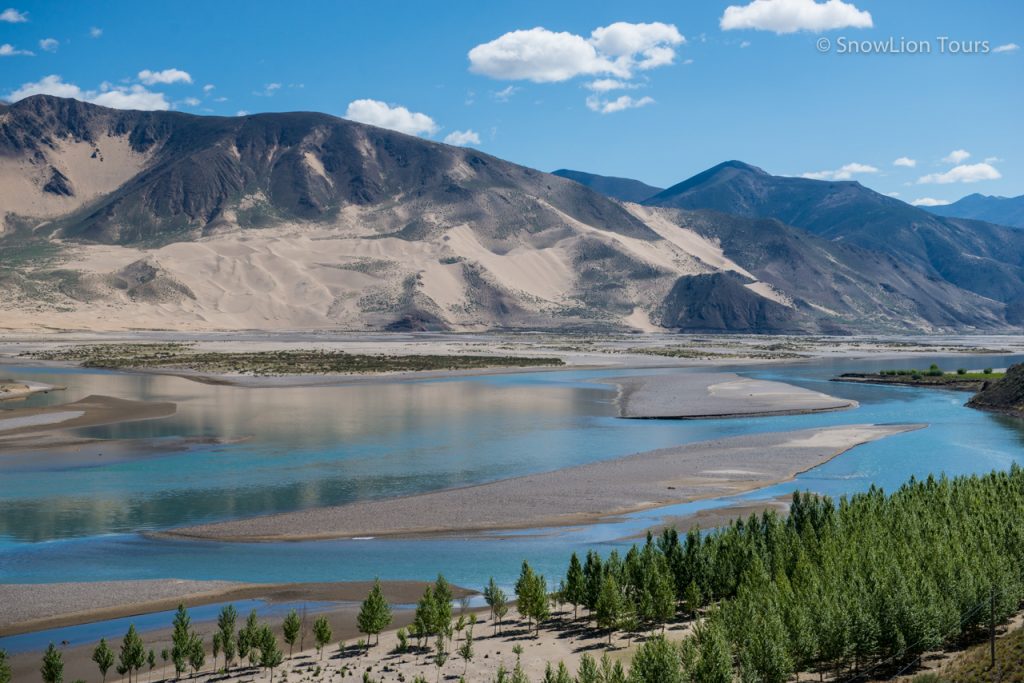
Brahmaputra or Yarlung Tsangpo in Tsang, Central Tibet
Without Yarlung Tsangpo the life of the Tibetans could hardly even be possible. Unlike Northern ethnic groups the semi-nomadic shepherds on the windswept plateau can’t subsist on meat only. They have to exchange part of the meat and butter for grain which grows only in warm valleys sheltered from the wind. Today even watermelons are grown in the vicinity of Lhasa.
The Mekong and the Salween — where time stands still
Like two small copies of the Yangtze these rivers flow through North-Eastern and Eastern Tibet next to their elder sister, separated by small but very steep ridges. The upper reaches of the Mekong and the Salween are so far from inhabited places that some nomads who lived there until the 20th century were ‘professional’ robbers for any caravans going to Lhasa, and did it with complete impunity like in biblical times. And downstream there are famous populated areas of North-Eastern and Eastern Tibet with ancient big monasteries. In valleys the climate is much milder than on the open plateau. It is even better than in the vicinity of Lhasa, and on the Mekong one can not only grow simple barley for tsampa, but even wheat and vegetables, and its sandbanks are overgrown with wild and delicious sea-buckthorn.
It is an attractive land, unlike the windswept highlands with not even shepherd’s tents. Local Tibetans are thrifty sedentary farmers, they live in wealthy houses with large sun parlours. Down below is the forest, so the houses are built of logs, just like log cabins in Europe and America. The climate is so mild that even heat-loving monkeys can be found on the slopes.
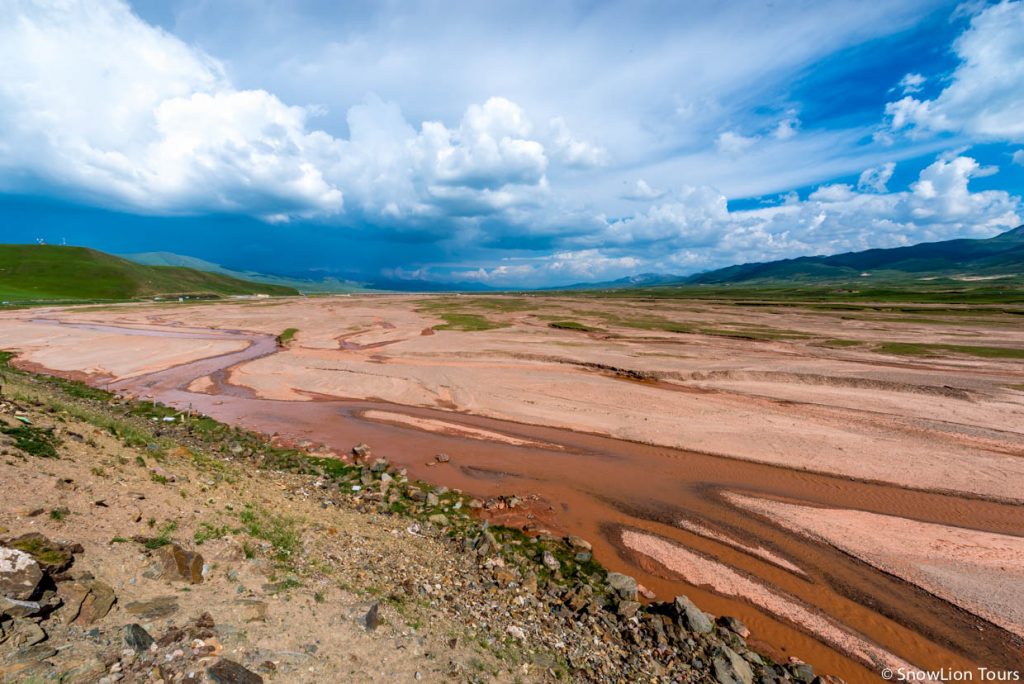
The Ebo River in Qilian, Qinghai Province, Eastern Tibet
Westerners explored these areas only in the 20th century while Tibetans have lived here for centuries not even counting time. And many places around the Mekong and Salween are still hard to reach nowadays, especially where their waters fall roaring onto to the plain, there are many protected areas. There wild animals may still find refuge from the human activities gradually penetrating into Tibet.
The Sutlej and the Indus – rivers of uninhabited wilderness
Two more great rivers flow from the snow ridges of the Himalayas through Tibet to the West. Sutlej is the only river that runs down from the top of Kailas. The Indus begins not far from it, though not from the most sacred peak itself. Both of them make their way through dry and uninhabited places to the West, to India and Pakistan. It seems they are much more well-known there, than in Tibet. In the Middle Age however there was Guge, a powerful Kingdom of Western Tibet in the valley of the Sutlej river. Due to extremely dry climate the ruins of its capital are well preserved until this day.
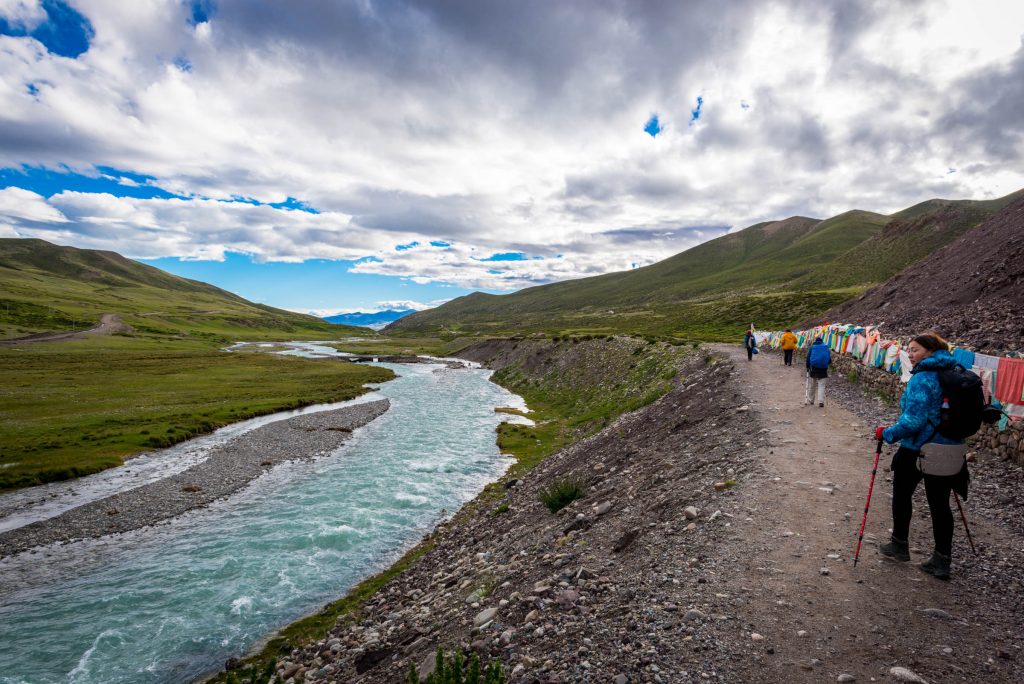
River at the bottom of Mount Kailash
River Kunlun: Golmud, Yurunkash, Keria, Cherchen, Karakash, and others
These rivers do not flow through Tibet for as long, and they are not as large as those described above. On their way, they wash away loose sediments and make very steep gorges with a total depth of several kilometers, real canyons — wild and picturesque. This is a godsend for water athletes who want to test themselves on difficult rivers that have never been crossed. In some places catamarans are sailing almost in an underground tunnel with only a narrow strip of sky visible between the steep impregnable walls and turbulent waters in the middle.
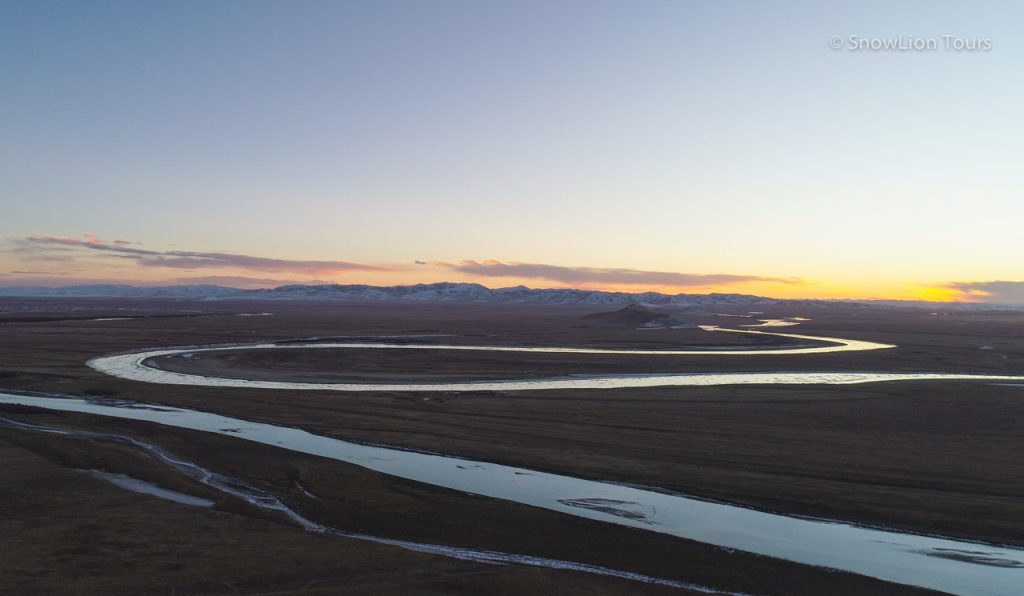
Crossing a mountain river on the bark around the sacred Mount Amnye Machen, part of Kunlun mountain range
In China, these rivers have been known since ancient times as a source of rare jade, which they carry out of Kunlun to the plain: all you have to do it collect the precious jewelry. People look for elegant stones even nowadays. Every small town nearby will certainly have a bustling market selling minerals, graceful stone figurines and jewelry.
The Himalayas rivers: Irrawaddy, Gandak, Kosi, Kali and others
The Himalayas are very young mountains, their glaciers that gave rise to turbulent rivers, appeared only recently. They carry less waters than the great rivers of Asia, but are very picturesque. The upper reaches flow through clean green alpine meadows washing them, below them lie the great Himalayan coniferous forests, and further below real humid jungle begins. The way from Tibet to Nepal is breathtaking: in just half a day cold and dry winds of the Tibetan plains are replaced by warm moist fog which literally flows through the leaves of banana and teak trees and even seeps into backpacks. from here the Tibetan plateau seems far away and unreally celestial.
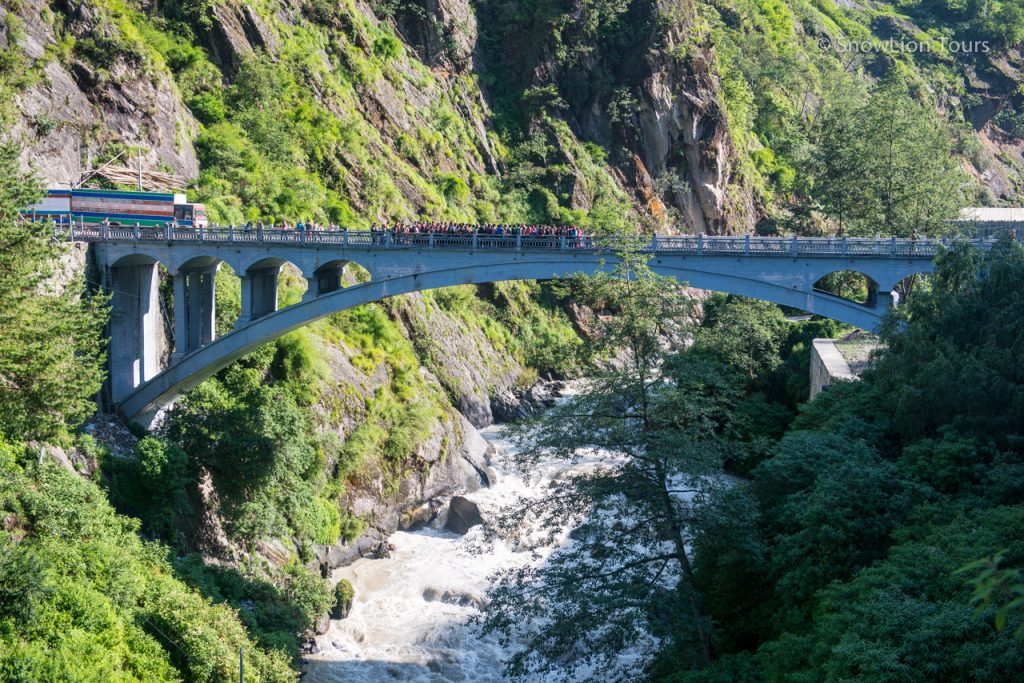
The Friendship Bridge and River at the border between China and Nepal





